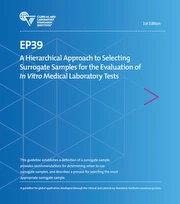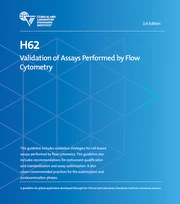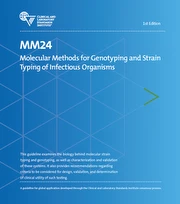You'll receive the latest updates on new standards, guidelines, and educational resources, as well as expert insights to help enhance your laboratory's performance and compliance.
News
Catch up on the latest news and updates from CLSI.
View All News Posts
Filters
{{ sortLabels[option] }}
April 25, 2022
The Clinical and Laboratory Standards Institute (CLSI) has published the second edition of M47—Principles and Procedures for Blood Cultures.
Microbiology
April 12, 2022
Biotech executive, Barbara J. Jones, Ph.D., has been named Chief Executive Officer of the Clinical and Laboratory Standards Institute (CLSI) effective May 16, 2022. The current CLSI CEO, Glen Fine, announced his retirement in January 2022 and is set to depart the organization after 17 years at the helm.
CLSI News
March 15, 2022
The Clinical and Laboratory Standards Institute (CLSI) has published M100—Performance Standards for Antimicrobial Susceptibility Testing, 32nd Edition.
February 17, 2022
CLSI announces the election of three new Board members. Serving as new Directors are Collette Fitzgerald, PhD, Tania Motschman, MS, MT(ASCP)SBB, and Susan Sharp, PhD, D(ABMM), F(AAM).
CLSI News
February 7, 2022
The Clinical and Laboratory Standards Institute (CLSI) has published the 5th edition of M39—Analysis and Presentation of Cumulative Antimicrobial Susceptibility Test Data. This guideline describes methods for recording and analyzing antimicrobial susceptibility test data, consisting of cumulative and ongoing summaries of susceptibility patterns of clinically significant microorganisms.
January 19, 2022
The Clinical and Laboratory Standards Institute announces the recipients of its 2022 Excellence Awards. These awards celebrate the achievements of CLSI volunteers who have helped improve the quality of medical care worldwide.
CLSI News
November 29, 2021
The Clinical and Laboratory Standards Institute (CLSI) has published the first edition of guideline EP39—A Hierarchical Approach to Selecting Surrogate Samples for the Evaluation of In Vitro Medical Laboratory Tests.
November 5, 2021
The Clinical and Laboratory Standards Institute (CLSI) has published the first edition of H62—Validation of Assays Performed by Flow Cytometry.
November 2, 2021
Glen Fine, the Chief Executive Officer of the Clinical and Laboratory Standards Institute (CLSI), announced he’s retiring effective Spring 2022. For 17 years Fine has served as the head of the globally recognized standards development organization in the field of laboratory medicine.
CLSI News
October 19, 2021
Read CLSI publishes new guideline MM24—Molecular Methods for Genotyping and Strain Typing of Infectious Organisms and other press releases.
No Results
No results were returned for that query.







